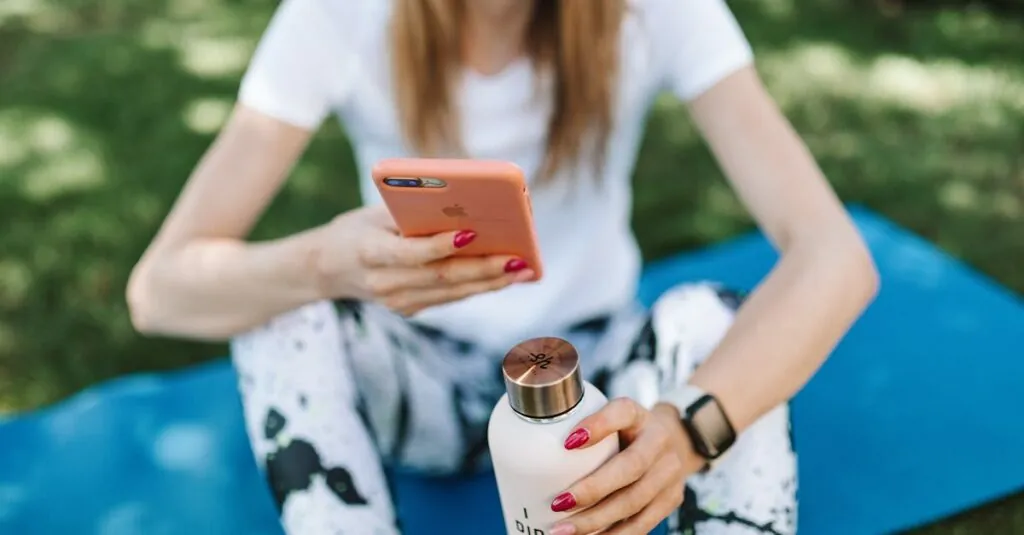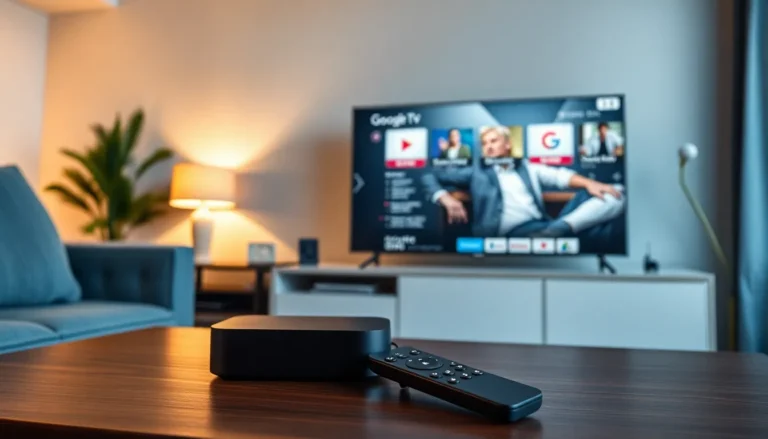In a world where smartphones are practically an extension of ourselves, the thought of someone tracking your every move can feel like a scene straight out of a spy movie. But is your iPhone really playing the role of a secret agent? From sneaky apps to rogue settings, the possibilities are endless, and not in a good way.
Imagine this: you’re enjoying a peaceful afternoon when suddenly you realize your phone knows you’re at the coffee shop before you even order that double espresso. Creepy, right? Understanding whether your iPhone is being tracked is crucial for protecting your privacy. So grab your detective hat as we dive into the signs that indicate your phone might be sharing more than just memes and cat videos.
Table of Contents
ToggleUnderstanding Phone Tracking
Phone tracking refers to the process of monitoring a device’s location and activities. It involves various technologies that can track movements, access messages, and collect data.
What Is Phone Tracking?
Phone tracking allows third parties to monitor a device’s location and user behavior. Tracking mechanisms include GPS technology, Wi-Fi signals, and cellular data. Apps frequently utilize these tools for navigation and location-based services. Situations arise where tracking may occur without explicit consent, raising privacy concerns. Users must evaluate which apps have permission to access location services. Unauthorized tracking can occur through malicious software, making vigilance essential.
How Does Phone Tracking Work?
Phone tracking employs multiple technologies to determine a device’s location. GPS satellites provide real-time geographical coordinates. Cell towers relay data, offering approximate locations based on signal strength. Additionally, Wi-Fi networks can pinpoint location through nearby access points. Mobile applications often request location access for functionality. Surveillance can also stem from apps sending location data to servers. Understanding how these mechanisms operate is crucial for safeguarding privacy.
Signs That Your iPhone Is Being Tracked
Detecting whether an iPhone is being tracked involves noticing unusual behaviors. These signs may indicate that someone monitors device activities or locations without consent.
Unusual Battery Drain
Frequent battery drainage can signal tracking software usage. Users often report that their phones lose charge faster than expected, especially if there are no new apps installed. Background processes associated with tracking may draw significant power. Monitoring location data demands extra energy, leading to quicker depletion. Regularly check the battery section in settings to identify rogue apps contributing to the problem. Understanding battery health helps users ascertain if a tracking app influences performance.
Unexpected Data Usage
Increased data consumption stands out as a warning sign. High data usage not linked to user activity may indicate that apps are sending location information to third parties. Checking the cellular settings reveals apps consuming more data than usual. Background activity continues even when the phone isn’t in use. Unexpected spikes in monthly data usage bills also warrant scrutiny. Keeping an eye on data allowances reveals unusual patterns that might suggest someone is tracking the device covertly.
Strange Text Messages
Receiving unfamiliar text messages can raise red flags. Messages containing strange characters or links may originate from tracking software. Phishing attempts often disguise themselves as harmless text, enabling malicious access to the device. Users should remain vigilant about unsolicited communications. Reporting or deleting such messages offers a layer of protection. Furthermore, consistent notifications from unknown senders warrant immediate investigation. Monitoring message patterns identifies potential tracking-related threats.
Checking for Tracking on Your iPhone
Monitoring the settings and applications on the iPhone allows users to detect potential tracking. Key areas require a thorough investigation for signs of unauthorized surveillance.
Review Location Services Settings
Inspecting Location Services settings reveals which apps access location data. Users can find this option in Settings under Privacy. Disable location access for unfamiliar apps. Regularly check permissions for installed applications. Unauthorized access often indicates a tracking threat. Adjust settings to enable location services only for trusted apps. Resetting location services can also enhance privacy.
Examine Installed Apps
Analyzing installed apps aids in identifying suspicious software. Users should regularly review their apps for unfamiliar entries. Research apps before downloading to avoid malicious software. Consulting app ratings and reviews provides insight into their functionality. Deleting unrecognized or unused apps reduces potential tracking risks. Always maintain up-to-date security measures while using the device.
Update Your iOS
Keeping the iOS updated strengthens overall security. New updates often include critical security patches that address vulnerabilities. Users should navigate to Settings and select General, then Software Update. This process ensures the latest protection against potential threats. Automatic updates help in receiving timely security enhancements. Regularly updating prevents exploitation by tracking software.
Tools to Ensure Your Privacy
Maintaining privacy on an iPhone requires using specific tools and settings effectively. Users can take proactive steps to safeguard their information.
Recommended Privacy Apps
Several apps enhance iPhone privacy. DuckDuckGo provides a private web browsing experience, preventing tracking from advertisers. WhatsApp, using end-to-end encryption, ensures that messages remain confidential. Users can also consider Signal for secure messaging, which prioritizes data protection. NordVPN helps users browse securely by masking their IP address, making online tracking more difficult. Each app plays a crucial role in enhancing privacy, offering features that limit data collection.
iPhone Security Settings to Consider
Configuring security settings is essential for iPhone users. Begin by navigating to Settings, then Privacy, to review location services. Disable access for apps not essential to daily functions. The App Tracking Transparency feature allows users to control which apps can track them across other apps and websites. Turning off Background App Refresh prevents apps from updating when not in use, reducing the potential for data leaks. Ensuring Find My iPhone is enabled provides an extra layer of security against unauthorized access. Regularly reviewing these settings can significantly enhance overall privacy protection.
Staying informed about potential tracking on an iPhone is essential in today’s digital landscape. Users must remain proactive in monitoring their devices and understanding the signs of unwanted tracking. By regularly reviewing app permissions and utilizing privacy-enhancing tools, individuals can significantly reduce their risk of being monitored.
It’s crucial to keep iOS updated and to be cautious with unfamiliar apps that may compromise privacy. Taking these steps not only protects personal information but also empowers users to take control of their digital lives. With vigilance and the right precautions, maintaining privacy on an iPhone can be achievable.








